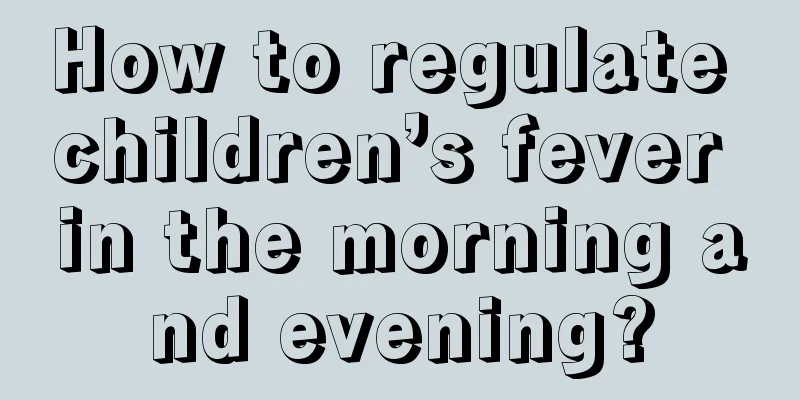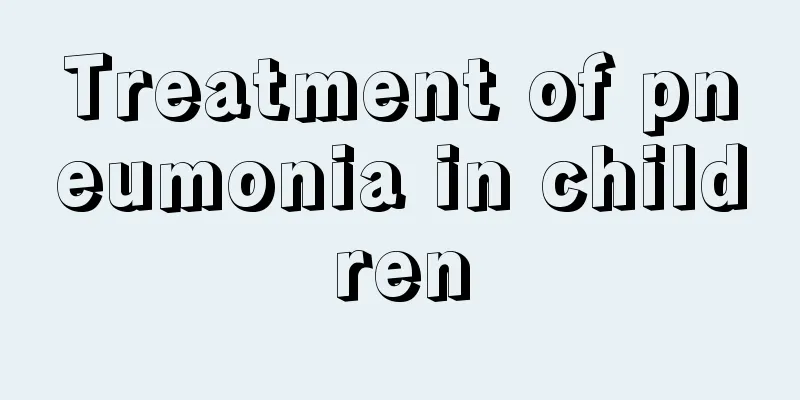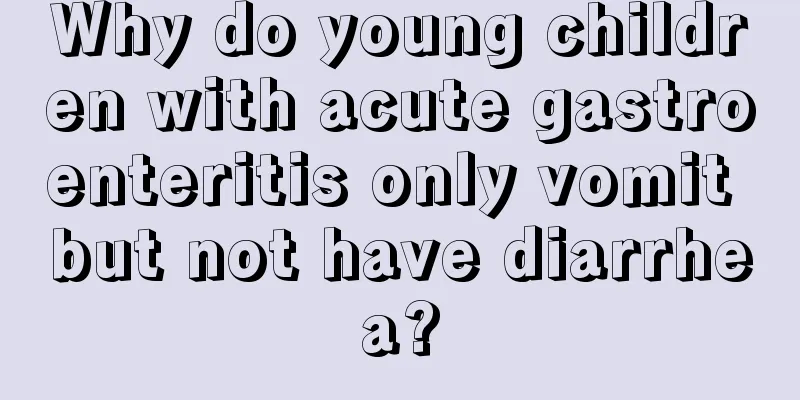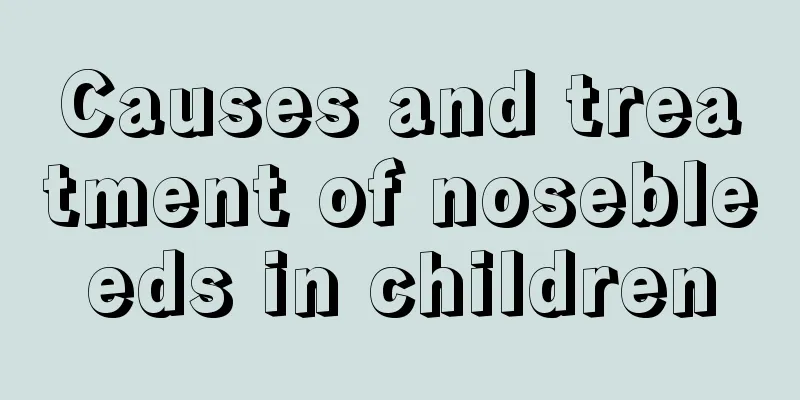How to regulate children’s fever in the morning and evening?

|
Many children are very susceptible to illness because they are too young and have weak immune systems. When children get sick and have a fever in the middle of the night, they will feel very uncomfortable and may even vomit continuously. Many parents are very anxious, but because it is too late, it is difficult to send them to the hospital, and they don’t know what method to use to treat them. Don’t worry, next, the editor will explain to you what to do when your child has a fever. Use antipyretics: The effectiveness of antipyretics from highest to lowest is: ibuprofen, acetaminophen, metamizole, compound aminopyrine and aspirin. The most commonly used is syrup containing paracetamol, which has mild side effects when used in regular doses for a short period of time and can be used as the first choice antipyretic drug. If your child cannot tolerate oral medications, rectal suppositories may be an option. Warm and wet compress: Apply a large warm, wet, and semi-dry towel to the baby's chest and abdomen, but be careful not to turn on the air conditioner to prevent the room temperature from being too low and causing a chill that worsens the cold. In addition, you can also use a few slightly cool wet towels (about 25℃), wring them into half dry, and place them on the baby's forehead, neck, armpits and thighs for cold compress. Change them every 5 to 7 minutes. The cool feeling can make the baby much more comfortable. Apply ice or use an ice pillow: Place an ice pack on the baby's forehead or both sides of the neck, or on the armpits and bilateral groin areas. To make a homemade ice pack, put crushed ice into a plastic bag, add an appropriate amount of cold water, squeeze out the air, and tie the bag. Or you can let your baby sleep with an ice pillow, which can help the baby dissipate local heat and reduce fever. But be sure to wrap a layer of cloth around the ice bag to prevent local frostbite on the baby's skin. Generally, ice compresses and ice pillows are only suitable for older babies. For babies under 6 months old, you can use fever-reducing patches on the market to relieve the discomfort caused by high fever. The above article introduces some methods to help children reduce their fever. Parents can use them. However, if the child's fever is too high, reaching over 39 degrees, he must be sent to the hospital for treatment. Otherwise, if the high fever does not subside, it will cause great harm to the child's body. Of course, your child should also drink plenty of water and rest in bed. |
<<: What should I do if my three-year-old child has a fever in the middle of the night?
>>: What should I do if my 2-year-old baby has lung heat and cough?
Recommend
What is the reason for the baby's red eyelids?
The skin of a newborn baby is relatively tender. ...
What is the reason for the small red spots on the forehead of the newborn baby?
Many expectant mothers are troubled by a phenomen...
Indigestion and diarrhea in children
With the continuous improvement of modernization,...
Why do children cough at night?
Coughing is not a good thing. A mild cough will m...
What can't babies eat if they have eczema
What should we do if our baby has large areas of ...
What to do if your 40-day-old baby has a cough
Babies always encounter various problems during t...
What are the ways to make little girls grow taller?
Many little girls have reached a certain age, but...
Newborn baby has no bowel movement on the third day?
If a newborn does not have a bowel movement on th...
How to treat eczema herpeticum in children?
How to treat herpetic eczema is a question that t...
What are the effects of anger on children?
I don’t know if you have ever encountered a situa...
What causes strabismus in children?
Under normal circumstances, our eyes are looking ...
Why does my baby bite his nails?
Many parents will find that their babies like to ...
What should children with kidney yin deficiency eat?
Everyone knows that children's physical const...
What to do about separation anxiety in children?
What causes separation anxiety in children? Nowad...
What is the order in which baby teeth grow?
The order of baby's teeth growth is from 6-7 ...









